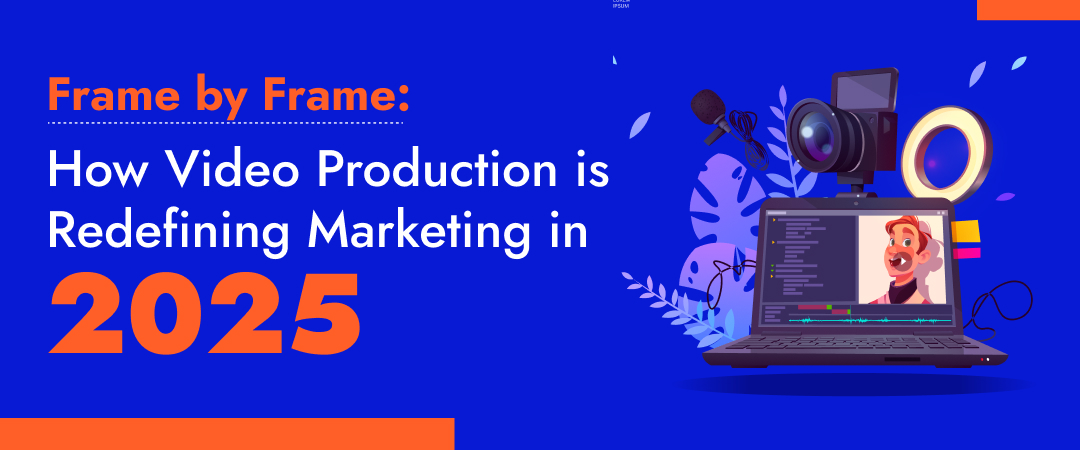The Shift Toward Video-First Digital Strategies
In 2025, digital content consumption habits continue to evolve. Video has become the default medium for both communication and engagement.
Social platforms like TikTok, Instagram, and YouTube Shorts prioritize video in algorithms. Brands are adapting quickly—replacing static posts with motion-based storytelling.
Consumers prefer video because it’s easier to absorb. It simplifies complex messages. It drives higher engagement and improves recall.
Search engines also favor video. Pages with embedded video now rank higher. Videos increase time-on-site and reduce bounce rates.
Live streams, product demos, explainers, and testimonials now anchor most digital campaigns.
Video marketing is no longer optional. It’s central to how businesses communicate value.
Key Trends Shaping Video Marketing in 2025
Short-Form Video Dominance
Short-form content under 60 seconds is everywhere. Why? It matches the speed of digital attention spans.
From YouTube Shorts to Instagram Reels, bite-sized videos get better engagement than longer formats.
Brands use this format for teasers, behind-the-scenes clips, and product features.
The format forces clarity—only the essential message survives.
Short-form videos also integrate easily into email marketing, SMS, and paid ads, making them versatile and cost-effective.
AI-Generated and Edited Video Content
AI tools like Runway, Pictory, and Descript are revolutionizing video production.
Brands generate explainer videos, tutorials, and promotional clips without large teams or high budgets.
AI speeds up editing, voiceovers, subtitles, and even B-roll generation.
This allows small businesses to compete with high-end production—quickly and affordably.
It also enables personalization at scale, tailoring content to specific audience segments.
Interactive and Shoppable Videos
Interactive videos drive engagement by inviting viewers to click, choose, or buy within the video itself.
Shoppable videos—especially in ecommerce—allow users to add products to cart directly from the screen.
These features reduce friction and shorten the sales funnel.
They also provide rich engagement data, helping marketers track performance more effectively.
Interactivity boosts both conversion rates and brand experience.
Business Benefits of Investing in Video Production
Video increases brand trust, clarity, and conversion.
Explainer videos improve product understanding, leading to higher purchase intent.
Testimonials build credibility faster than written reviews.
Video ads offer better click-through rates than display ads.
For internal use, training videos reduce onboarding time and costs.
Video also supports SEO goals, enhances email open rates, and strengthens social media performance.
Investing in quality video pays off across the entire marketing funnel—from awareness to retention.
How to Build a High-Impact Video Marketing Strategy
Start by setting clear goals: brand awareness, lead generation, education, or sales.
Map video types to stages of the buyer journey:
-
Awareness: brand stories, short social videos
-
Consideration: explainers, comparisons
-
Decision: testimonials, product demos
Script concisely. Keep intros short. Hook viewers in the first 3 seconds.
Use captions for accessibility and autoplay scenarios.
Optimize for mobile—over 80% of video views happen on phones.
Distribute videos across multiple channels—website, YouTube, social, and email.
Track performance using metrics like view duration, click-through rate, and conversions.
Tools and Platforms Leading the Charge
Editing & Creation:
-
Adobe Premiere Pro
-
Final Cut Pro
-
Canva Video
-
CapCut (for mobile editing)
AI-Powered Tools:
-
Pictory (script to video)
-
Lumen5 (blog to video)
-
Runway (generative editing)
Distribution Platforms:
-
YouTube
-
TikTok
-
Instagram Reels
-
LinkedIn Video
-
Email (via tools like Mailchimp or ActiveCampaign)
Hosting & Analytics:
-
Wistia
-
Vimeo
-
Vidyard
These tools make production faster and smarter while giving marketers full control over branding and performance data.
Final Thoughts: The Role of Video in the Future of Marketing
In 2025, video isn’t just a content type. It’s a complete strategy.
It informs, entertains, sells, and retains.
From AI tools to interactive formats, the barriers to entry are lower than ever.
Businesses that embrace video now—across platforms, formats, and funnel stages—will stay ahead.
Video is no longer about trends. It’s about transformation.


